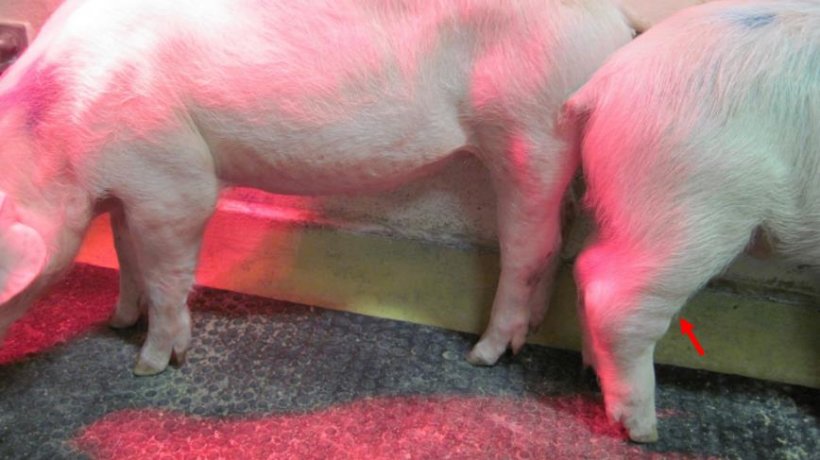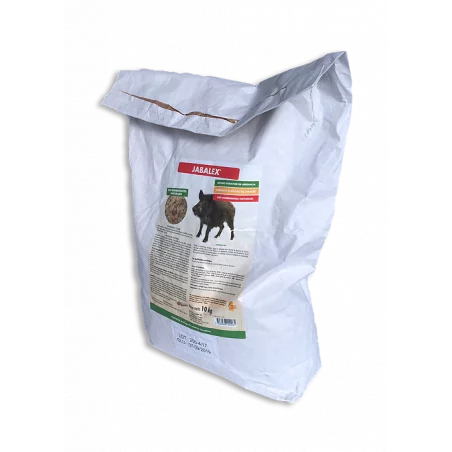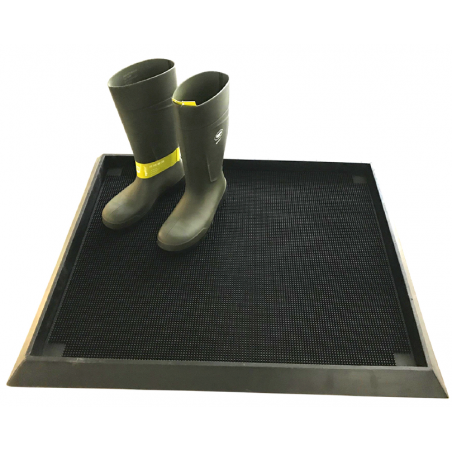A better knowledge of the ASF virus will help its control and early diagnosis. Research team leader Professor Grzegorz Wozniakowsk is helping to better understand the disease. His work (Walczak et al. 2020) attempts to indicate risk related to virus load and shedding and present possible difficulties with proper disease recognition at the farm level.
Working with 3 different doses, 1000-500-5 hemagglutination units (HAU, a virus quantification unit) of a highly virulent strain, their experiment provides valuable information with important practical implications regarding prevention and early diagnosis. We want to summarise the main findings.

Infection of pigs is possible with only five units of the ASF virus: the fact that the titre needed to produce an infection can be really low, tells veterinarians and farmers that the potential introduction of ASF to a farm may involve a very small dose of the virus.
What is the main practical implication of such a low infective dose?
For us, the real surprise was that as low as five doses of the virus was enough to reproduce the clinical course of the disease. I think for Poland and the neighbouring countries, this was the most important message. It influences how to prevent the potential spread of ASF to domestic pigs from a population of infected free-ranging wild boar. Sometimes it is difficult to convince people that certain procedures regarding biosecurity and activities are crucial to prevent the spread of the virus to pig holdings. In the end, I think, the key point is awareness. We are doing our best to organize campaigns to present the results from our animal trials, to raise consciousness about the potential infectivity of the virus and the danger of ASF, which may occur in almost any pig holding.
Would the dosage explain a difference in clinical forms? In other words, would five units produce a lesser clinical effect than if there was a higher dosage?
No, we observed the same clinical course, independent of the primary dose or titre of the virus in the infection.
Looking at infection routes and the very low infective dose, would such a small dose depend on intranasal infection, direct contact, or aerosol? How would it have to reach the pig?
We looked at whether it was possible to infect the pig by the intranasal route and indeed this was true, intranasal infection is important in the spread of ASF. Aerosol and airborne routes were also tested and the results are still being analysed, but we have evidence that they could be other possibilities. It has to be considered that aerosol or direct contact routes of the infection were proved previously by other authors.
Considering that the ASF strain used in your experiment was highly virulent, did you see differences in the clinical presentation?
During this experiment, the disease developed into at least three forms of ASF (acute, subacute, and chronic). Some previous studies suggest that the form of the disease may depend on the virulence of a particular virus isolate (i.e., chronic form—low virulent strains, subacute—moderately virulent strains, etc.). Other studies revealed that the clinical course of ASF might depend not only on the isolate virulence but that it also could be related to dose, routes of infection, and individual predisposition of animals. Nevertheless, our study proved that the same virus isolate might cause the different clinical forms of the disease.

What about the presence of clinical signs? Did you see differences?
During the experiment we saw ordinary, typical for ASF, but non-specific clinical signs like fever, body paleness, listlessness, and reduced feed intake. But it should also be considered that some viremic animals presented delayed fever; in some cases, the fever was not even detectable. One viremic animal that was showing a high fever was still interested in feed.
In our experiment, we observed an interesting phenomenon; in one infected pig we saw chronic disease. That pig survived until the 32nd day of the experiment and showed the classical clinical course of African swine fever. This shows that in some conditions pigs or wild boar may survive the infection.
Did you see differences in the incubation period?
The shortest incubation period was estimated at 5 days. Pigs with the chronic form of the disease (survivors) presented delayed incubation periods (12 and 20 days), but on the other hand, several pigs with the subacute form of ASF also presented delayed incubation periods (16 and 17 days) thus incubation periods could not be clearly associated with the form of the disease.
What are the practical implications of your study regarding on-farm diagnosis and monitoring?
Veterinary diagnosis may be difficult, and the final results should always be based on laboratory investigations. Clinical signs can be non-specific and variable. Some signs seen in practice could suggest a disease that may be cured with antibiotics, for instance erysipelas. But the ASF virus spreads only slowly from pig to pig. Sometimes a single pig with high temperature, over 41.5 degrees, may be the first clinical sign of the beginning of an outbreak of African swine fever.
Pig farms, especially those located in at-risk areas, should immediately diagnose each case of unexplained animal death, and the carcass (as the material with the highest viral load) should be properly disposed in accordance with biosecurity procedures
Farm staff and veterinarians are the first who may come into contact with affected animals. Their awareness about proper procedures of diagnosis, handling, and disposal of suspicious animals, as well as knowledge of the actual epidemiology may play a key role in prevention and minimizing the consequences of a potential outbreak.









